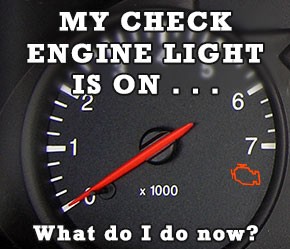When Glendora drivers’ years ago first saw their check engine light illuminate they not only paid attention to it, they panicked. Many immediately pulled their car over to the side of the road and called for help. Now many drivers simply ignore it. It may be annoying to see it illuminated all the time but they get by. Some drivers have even chosen to cover it up with a piece of duct or electrical tape (yeah…I’ve seen that!).
When your check engine light illuminates it shouldn’t be ignored. No…you don’t need to panic and call for a tow truck but you do need to get it checked out. It is telling you that one of your vehicle’s systems needs attention! Here are the possible systems:
- Ignition System
- Fuel Injector
- Emission Control
- Faulty Oxygen Sensor
- Mass Air Flow Sensor
- Spark Plugs and Wires
Your car in many ways is a multi-computer system on wheels and when a light of any sort illuminates it is telling you something is not right and that it has done all it can do to correct the problem. When a car is brought in to our shop we connect it to a diagnostic scan tool and our technicians analyze the data streams. These include:
- Idle Speed
- Throttle Response
- Engine Temperature
- Fuel System Pressure
- Manifold Vacuum
- Exhaust Emission Levels
- Other Key Indicators
The scan tool gives them trouble codes stating why the check engine light illuminated. The technicians at Certified Automotive Specialists can then correct the problem and reset your car’s computer. Ignoring the light can cause serious problems down the road that require an expensive repair and at the very least it plays havoc with your fuel economy.
One word of caution…never ignore a flashing check engine light! This is when you need to pull over immediately and call us for a tow. This indicates a critical problem such as catalytic converter damage.
Certified Auto Specialists: the friendlier and more helpful auto shop! Feel free to call 626-963-0814 with any questions, and we will be glad to help, or visit our website at CertifiedAutoCa.com
Hometown Service You Can Count On!









